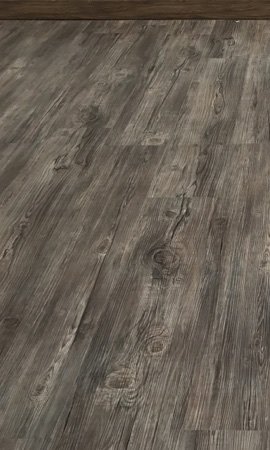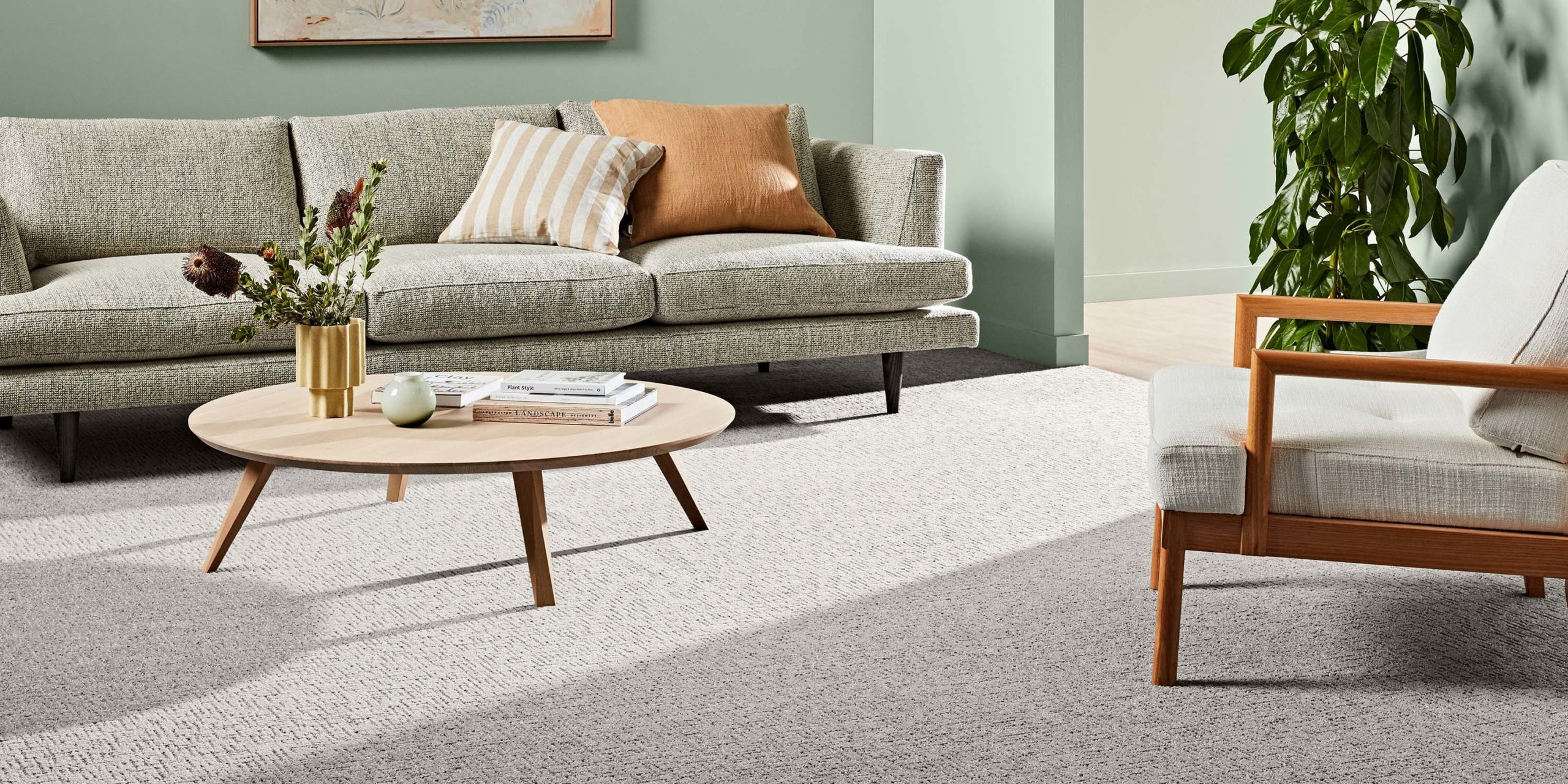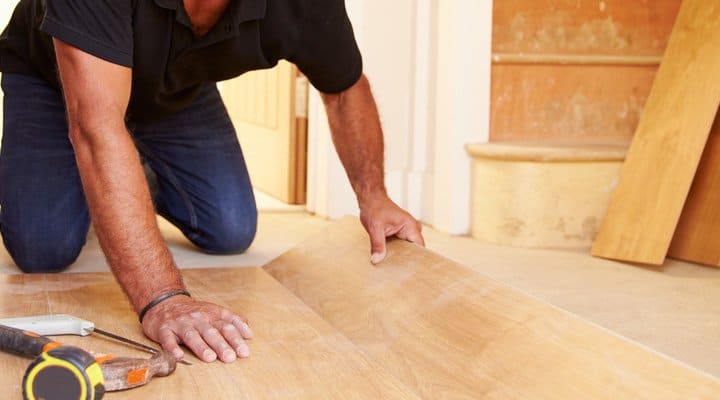

30 Apr How to Clean Laminate Flooring
When first installed, laminate floors will look shiny and brand new. However, there will be effort involved in keeping the planks looking as fresh as the day they arrived. Inevitable stains and dust will build up on the floor if you do not take care of it. Especially in residences or spaces with high amounts of foot traffic.
This guide will provide you with expert guidance and advice on how to efficiently and effectively clean and maintain your laminate floor.
Step 1: Understanding Your Laminate Flooring
What is Laminate Flooring?
- Wear Layer – The abrasion resistance of a laminate floor is dependent on the thickness and quality of the aluminium oxide wear layer.This is the part which you want to protect.
- Print Layer – The print layer is what makes the laminate flooring look like real timber.
- High Density Fibreboard – The laminate floorboard itself is made up of high density fused wood pulp. The more dense the fibreboard is, the more water resistant and durable your laminate floor will be.
The first step is to understand what type of laminate floors you have installed, especially since they come in many forms. Whilst they can be very hard wearing and water resistant, it is important to understand what laminate flooring can take on.
Click here for an in-depth article on what is laminate flooring.
Abrasion Rating:
The abrasion resistance is measured with the Abrasion Coefficient (AC Rating) where the higher the rating, the more scratch and dent resistant the laminate flooring surface is. This helps you determine which tools are suitable for cleaning.
- AC1: Light residential use – We recommend only sweeping and slightly damp mopping for cleaning. Tougher tools may wear down the surface over time.
- AC2: Moderate residential use – Sweeping, scrubbing and slightly damp mopping is appropriate, however vacuum with a soft padding on the head.
- AC3: Heavy residential use – These can withstand all non abrasive cleaning tools.
- AC4: Light commercial use – Easy to clean and very scratch resistant to traditional cleaning methods.
- AC5: Moderate commercial use – Any type of traditional cleaning method including floor scrubbers.
- AC6: Heavy commercial use – AC6 Laminate floors are capable of withstanding the highest traffic and toughest cleaning methods. AC6 laminate floors are also very uncommon.
Costs will vary with the ratings. Click here for a full pricing guide on laminate flooring.


Water Resistance:
Flooring technology advancements have enabled the production of water resistant laminate flooring which was unheard of only a decade ago. By checking your floor’s water resistance, you can figure out the most suitable methods of cleaning for your planks.
- 0 > 24 Hrs – Only clean with a well rinsed mop or towel, and immediately wipe up water or other stains. Stick to sweeping or vacuuming if possible.
- 24 – 48 Hrs – Avoid excess water when mopping or scrubbing. Be sure to dry the floors after cleaning if applicable.
- 48 – 72 Hrs – Laminate floors with higher water resistance from 48 hours to 72 hours can withstand wet mopping, provided you don’t flood the floors. It is still advisable to dry the floor afterwards to avoid extended soaking.
- 100% Waterproof Laminate – Newer ranges like AquaFloor Laminate offers a 100% waterproof option. This means they will never absorb water or swell. Wet mopping is completely fine, as long as you don’t inundate the floor.


Step 2: Preventative Care for Your Laminate Floors
The most effective method to keeping your laminate floors clean is to implement measures to minimise potential grime and dirt. Here are some easy and effective methods to consider:
- Doormats – Placing doormats strategically at all entrances of your home will prevent dirt from coming into your house. This can decrease the amount of cleaning you have to do, and prevent excess dirt from damaging your laminate floors.
- Sunlight – Excess sunlight, particularly from large windows can cause sunlight bleaching which will dull the colours of your laminate flooring in the long term. To prevent this, ensure the blinds are closed during midday and early afternoon when the sun’s rays are harshest.
- Furniture pads – These are an extremely worthwhile investment to prevent scratches or large gouges on your laminate floors. This makes it much safer to move heavy furniture when cleaning the hard to reach areas.


Step 3: How to Clean Your Laminate Flooring
- Mopping – When mopping your laminate floors, make sure to rinse your mop before using it, especially if the plank’s water resistance is low. Definitely avoid flooding the floors under any circumstances, and you won’t have to worry about water absorption. It is always advisable to dry the laminate floors after mopping to minimise soaking.
- Dealing with spills – It is important that you are able to wipe up any spills that occur as fast as possible. This can minimise risk of the liquid seeping through to the underfloor or even worse – staining. Laminate floors are all absorbent to an extent, and you certainly don’t want them drinking up a bottle of red or pasta sauce!
- Sweeping and Vacuuming – Not only does dirt affect the look of your flooring, they can also create microscopic scratches in the laminate flooring which can dull the colours of the planks in the long term. It is recommended that you sweep or vacuum your floors at least once a week, preferably with a soft dust mop or other indoor tool to minimise abrasion.
- Pet Accidents – Every so often we receive a request to replace planks which have mysterious discolourations and a funny odour. Aside from potty training pets, this is quite hard to avoid especially when the pet accident occurs when you aren’t around or aware. When the worst comes, use a pH neutral laminate floor cleaner.
Pro Tips for Cleaning:
- Use Two Buckets – When mopping, use two buckets. One for the clean water and one for the dirty water. This will save you effort and help avoid dirty mopping.
- Tactics – Strategically mop from inside to outside so you don’t have to walk over (or have someone else walk over) the freshly cleaned areas when getting around.
- Robot Vacuum Cleaner – Consider using a robot vacuum cleaner as they can save you a lot of time and effort. Many decent options cost around $100 in Sydney.
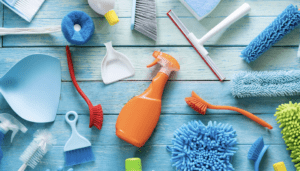
Avoid This When Cleaning:
- Abrasive Tools – Avoid rough and tough equipment such as steel sponges and hard bristled mops, as they can scratch your laminate floors, especially those with AC3 ratings or below.
- Steam Mopping – Use of a steam mop is strongly discouraged, as the amount of water used as well as high temperatures pose a risk to water damage and other problems in the long term. Stick to traditional mopping.
- Excessive Water – The biggest no no! Excessive use of water is a surefire way to waterlog the planks and cause major damage. This is a major problem, especially because by the time you notice any damage to your planks, it is already too late to fix.
Cleaning Comparisons Between Flooring Types
Laminate vs Hybrid Flooring
Laminates are highly durable, low-cost alternatives to hardwood flooring options. Because of this they are popular choices for many people. However, although some recent technology has allowed FloorVenue to sell waterproof laminate flooring, the vast majority of ranges on the market are only water resistant. On the other hand, hybrid flooring ranges are fully waterproof, but may lack the scratch and dent resistance laminate flooring is known for.
Pros:
- Waterproofing – Hybrid floors can be made from Stone Plastic Composites or Wood Plastic Composites. Both options will offer full waterproofing capabilities.
- Comfort – Hybrid floors feel very comfortable underfoot thanks to a pre installed acoustic underlayment which also reduces noise transmission. This is especially true in Wood Plastic Composite flooring as they are made partially from real wood to enhance the authentic timber feel.
Cons
- Durability – Hybrid flooring usually has an AC2 or AC3 abrasion rating, which makes it suitable for medium to heavy residential use, but it will not be as scratch or dent resistant compared to laminate flooring. Laminate flooring is usually sold at AC3 to AC6 abrasion rating, making it more durable and more suitable for commercial environments.
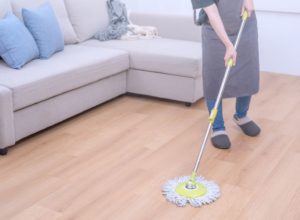

Laminate vs Timber Flooring
Undoubtedly, real timber flooring will have advantages over a flooring range designed to be a low-cost alternative. Nothing can beat the authenticity of 100% timber planks. However, they do come at a significant cost. More maintenance work will also have to be carried out on real wood flooring.
Pros:
- Material – For those who love authenticity, you can’t look any further than the real thing. These planks will bring a great underfoot feel to your home, as well as exuding class and sophistication.
- Durability – With the right care, these floors can last you a lifetime. With the planks being made of real wood, they can be sanded multiple times to ensure the colour is kept looking as new as the day you installed them.
Cons:
- Maintenance – To maintain a shiny new look, the floors have to be polished every 10 years. The floors also have to be cleaned regularly to avoid dust and debris buildup which will dull the floor’s colour. Furthermore, you would have to buy cleaning equipment specifically for cleaning hardwood floors which will likely come at a higher cost.
- Cost – As mentioned before, timber flooring will come at a significantly higher cost compared to laminate flooring. Laminate flooring typically costs $15 to $40 per square meter for supply only, whereas timber flooring can cost $50 to $120 per square meter for supply only.


